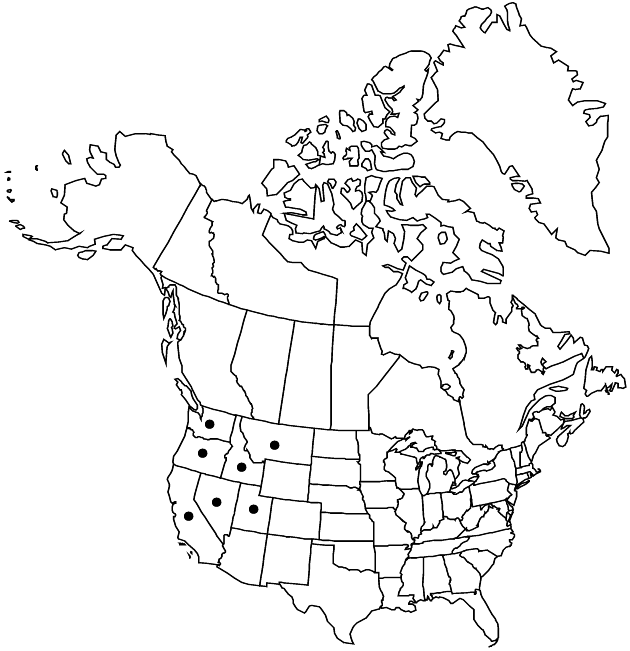Ageratina occidentalis
Phytologia 19: 224. 1970.
Perennials or subshrubs, 15–70 cm (caudices woody, rhizomatous). Stems (green or purple) erect or ascending, puberulent. Leaves opposite proximally, alternate on distal 1/4–1/2 of stems; petioles 5–12 mm; blades triangular to ovate, 2.5–5 × 1.7–4 cm, bases truncate to cuneate, margins serrate, apices acute, abaxial faces glanddotted. Heads clustered. Peduncles 2–5 mm, minutely puberulent. Involucres 3–3.5 (–4) mm. Phyllaries: apices acute, abaxial faces viscid-puberulent and/or sessile-glandular. Corollas pink, bluish, or white tinged with purple, lobes glabrous or glabrate. Cypselae sessile-glandular. 2n = 34.
Phenology: Flowering (Jun–)Jul–Sep.
Habitat: Crevices, outcrops, rocky slopes, ridges, talus, gravelly and sandy stream bars, mixed hardwood-conifer woodlands, aspen, open and brushy vegetation
Elevation: (40–50)900–2800(–3200) m
Distribution

Calif., Idaho, Mont., Nev., Oreg., Utah, Wash.
Discussion
Ageratina occidentalis is the only species of the genus in the flora area with sessile-glandular cypselae; peduncles also may be sessile-glandular. Its identity also can be confirmed among flora area species by its relatively long (5–6 mm) corollas.
Selected References
None.
Lower Taxa
"fine" is not a number.
